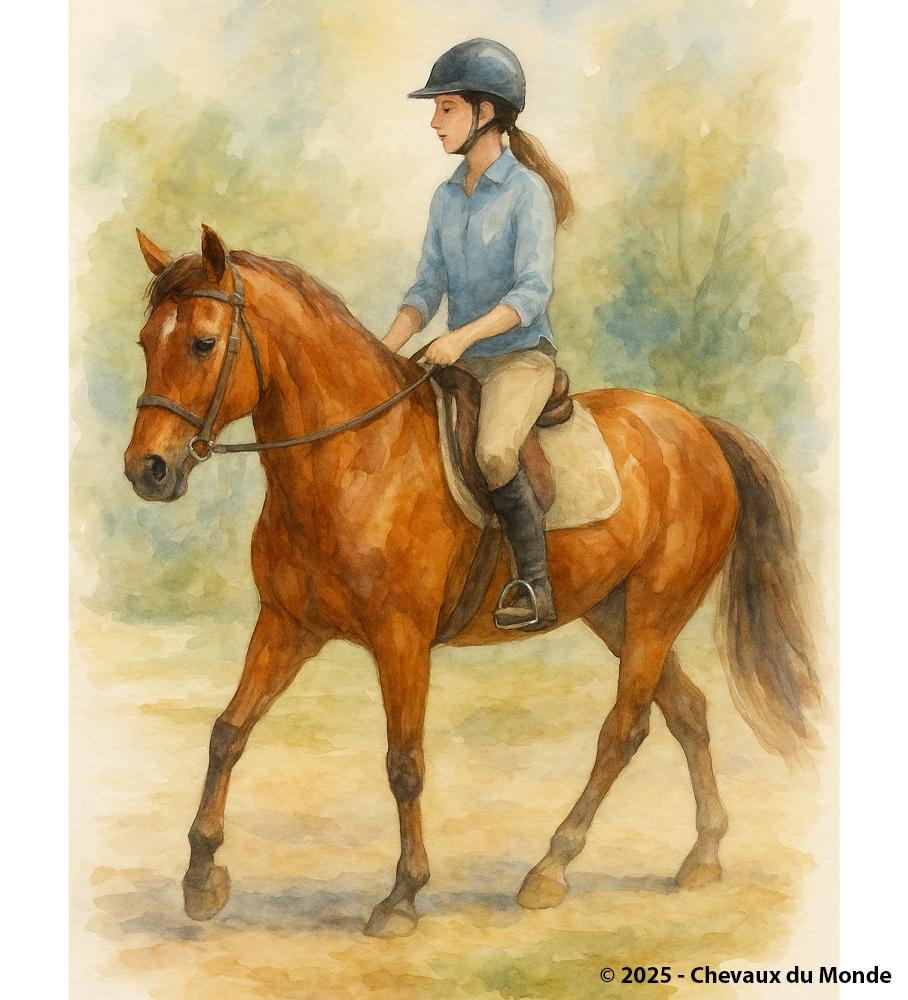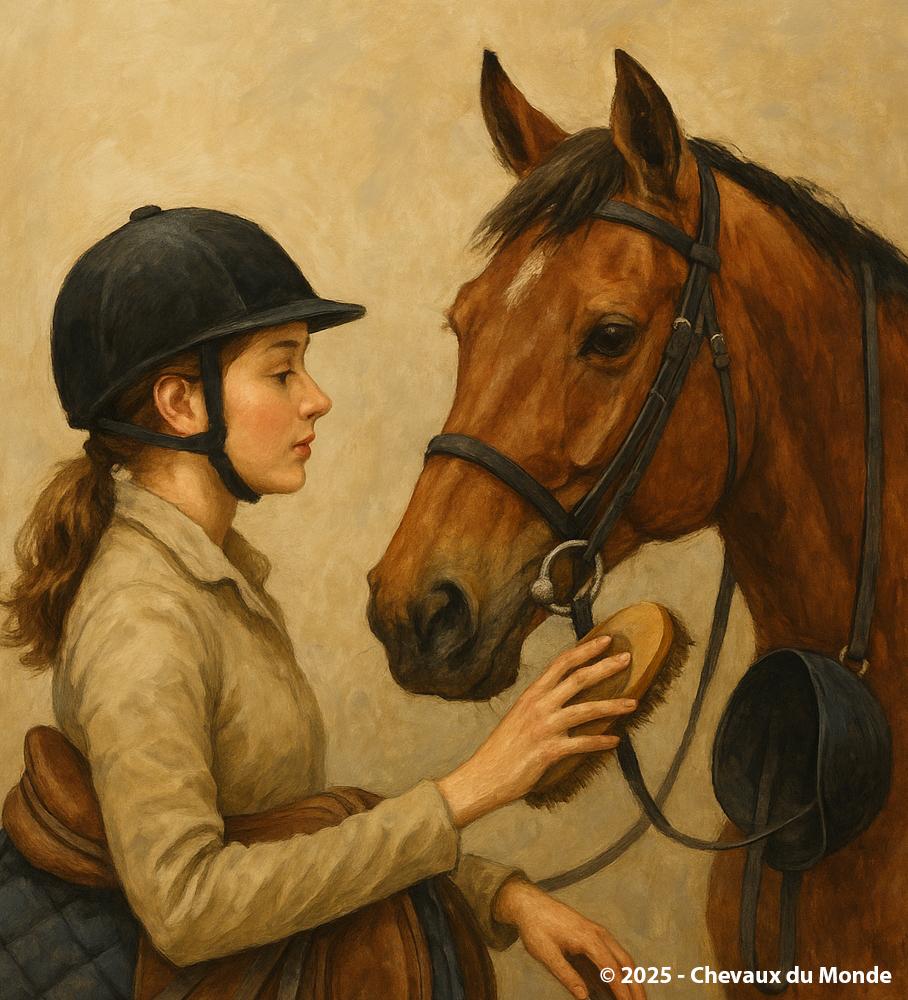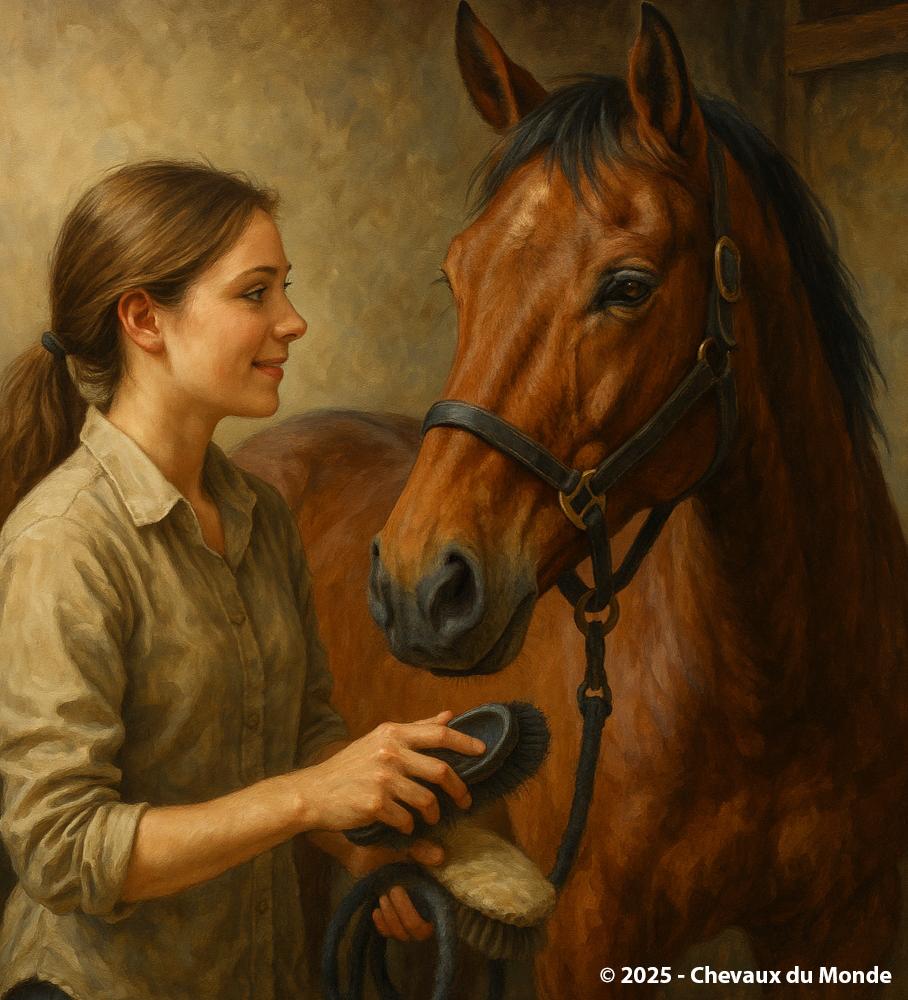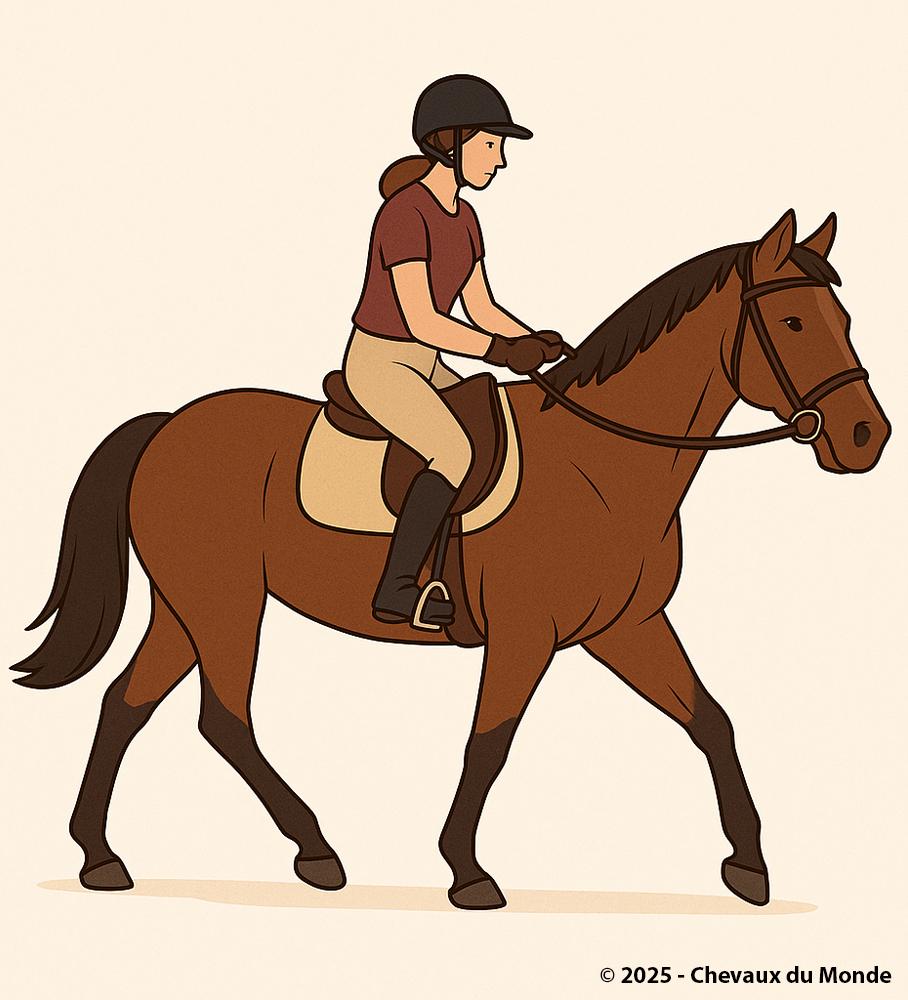RIDING BITLESS: IS IT POSSIBLE FOR A BEGINNER?
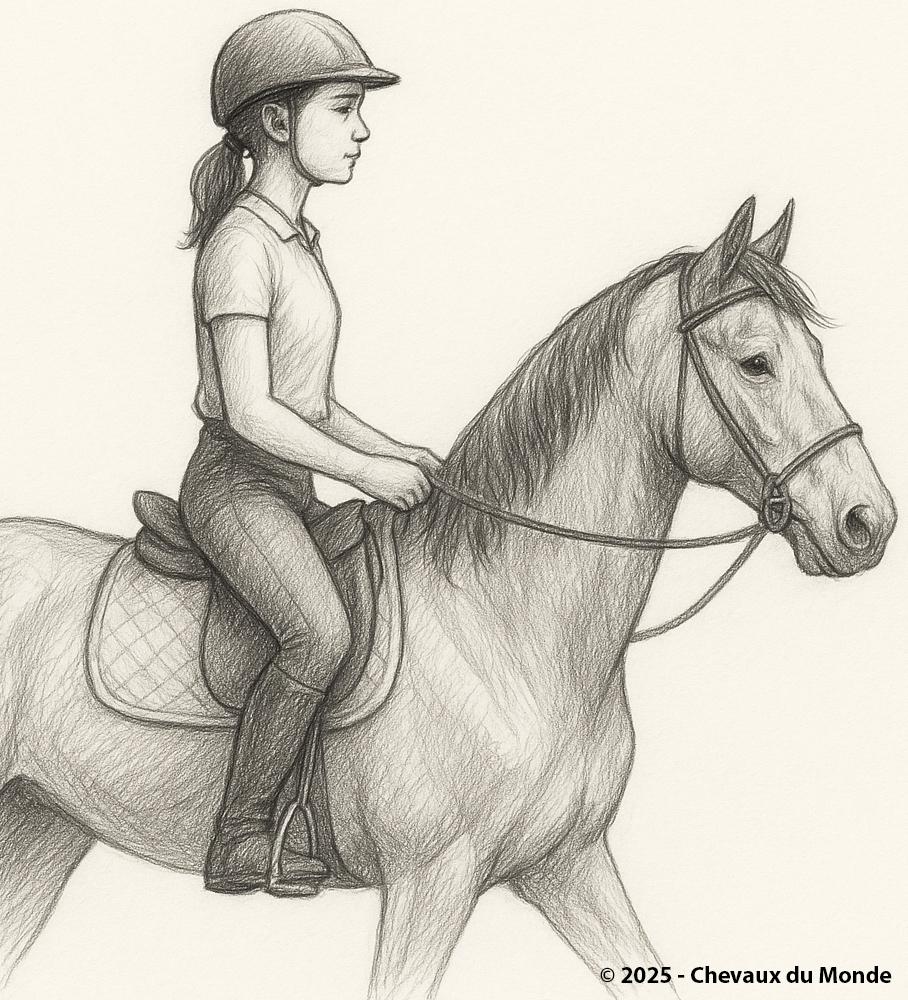
Bitless riding: a softer approach to horse communication, even suitable for beginners under proper guidance.
Riding a horse without a bit is attracting more and more riders, drawn to an approach considered more respectful of the horse and more natural. But is this practice really suitable for beginners? This article explores the advantages, the limitations, and the conditions necessary to consider bitless riding from the very first steps.
I. Understanding What It Means to Ride Bitless
1. Definition
Riding bitless means using an alternative bridle or bitless tack (bitless bridle, side-pull, hackamore, neck rope, etc.) to guide the horse. Communication then relies more on pressure applied to the nose, poll, or through the rider’s body rather than on the action of the bit in the horse’s mouth.
2. Different Bitless Options
- Side-pull: reins act laterally on the horse’s nose, similar to a classic bridle.
- Hackamore: offers a lever effect, more powerful, reserved for experienced riders.
- Bitless bridle: uses crossed pressure on the horse’s head.
- Neck rope (cordelette): used in natural horsemanship, requires finesse and strong partnership.
II. Bitless Riding: Pros and Cons
1. Advantages
- Horse welfare: no pressure on the bars or tongue.
- Refined communication: encourages the rider to use seat, legs, and balance.
- Ethics and respect: part of a gentler, more natural horsemanship philosophy.
2. Limitations
- Lack of precision: a beginner may struggle to give clear signals.
- Increased risks: outdoors or with energetic horses, control may be reduced.
- Not always accepted: certain equestrian disciplines still require a bit in competition.
III. Is It Suitable for a Beginner?
1. Favorable Aspects
A novice rider can start bitless, provided that:
- they are supervised by a competent instructor,
- they work with a calm, well-trained, and accustomed horse,
- they begin in an arena or enclosed space.
2. Challenges for Beginners
- Incorrect hand use: beginners often rely on the reins for balance; without a bit, the horse may not understand the cues.
- Limited knowledge of body language: refined aids are essential for success.
IV. Practical Tips for Starting Bitless
1. Choosing the Right Equipment
- Side-pull is recommended for beginners: simple, soft, and clear for the horse.
- Avoid the lever hackamore, which is too harsh.
- Make sure the noseband is properly adjusted (not too tight, not too loose).
2. Learning Progressively
- Start in a closed arena.
- Focus first on direction and halting before moving on to trot and canter.
- Use groundwork and lunging to build trust and communication.
3. Surround Yourself with the Right People
- Choose a riding school open to bitless training.
- Take lessons guided by natural horsemanship instructors.
Conclusion
Bitless riding is possible for a beginner, but not under every condition. It requires:
- a suitable horse,
- proper instruction,
- and a gradual learning process.
More than just a “trend,” it is a philosophy of relationship with the horse that can be accessible from the start, provided the rider is guided with care and respect.
"Riding bitless is not an easier path, it is a school of finesse and mutual trust."

